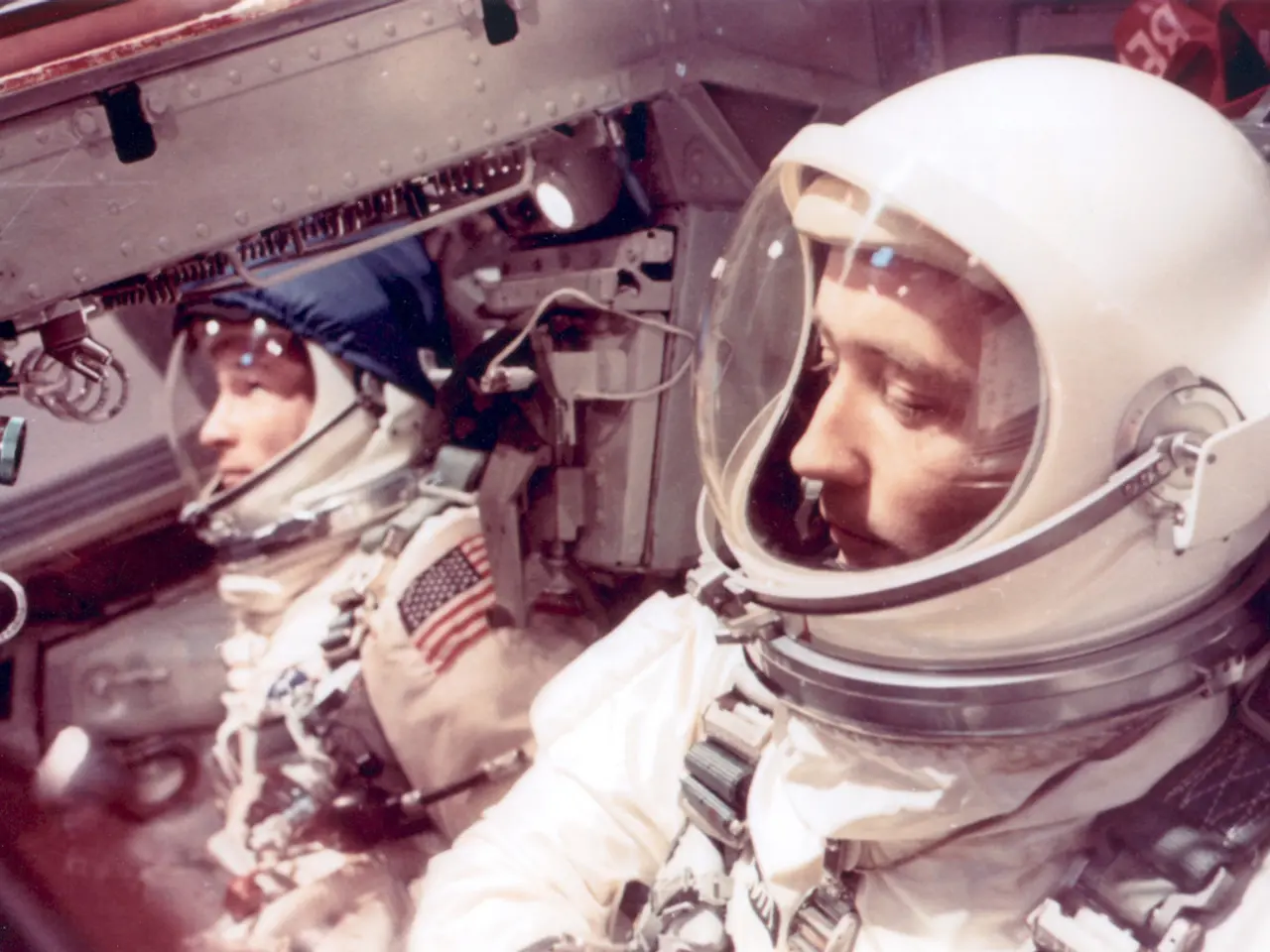Oleg Kononenko reaches historic milestone by spending an unprecedented 1,000 days in orbit.
Russian cosmonaut Oleg Kononenko made history on June 5, spending a remarkable 1,000 days in orbit around Earth, surpassing the previous record held by Gennady Padalka. This milestone, achieved during Kononenko's fifth space mission, offers valuable insights into the long-term effects of microgravity on the human body.
Spending such an extended period in space comes with its challenges. The lack of gravity causes redistribution of body fluids, leading to discomfort and nausea. More significantly, microgravity has deleterious effects on bone and muscle mass, causing astronauts to lose up to 1 to 2 percent of their bone mass per month in space [1]. As a result, astronauts like Kononenko may experience decreased muscle strength and endurance, compromising their ability to perform physically demanding tasks [2].
Kononenko's 1,000 days in space provide valuable data on human adaptation to prolonged microgravity. These findings are instrumental in refining countermeasures and rehabilitation protocols aimed at maintaining astronaut health. Key strategies informed by these findings include:
- Regular resistance and aerobic exercise regimes to mitigate muscle and bone loss.
- Advanced monitoring of neurological and visual health to detect early problems.
- Tailored rehabilitation programs post-mission to restore balance, strength, and coordination.
- Research into pharmacological interventions and dietary support to preserve skeletal and muscular integrity.
- Investigation of effective operational protocols during missions to reduce risks from disorientation and motion sickness.
The study of Kononenko's physiological changes upon return will aid in understanding the underlying mechanisms of physiological adaptations to microgravity. This understanding is crucial for planning future long-duration missions to Mars or deep space, where immediate medical evacuation is impossible, and sustained human function is vital [3].
Despite these efforts, some physiological changes persist and may require prolonged rehabilitation once astronauts return to Earth. American astronaut Peggy Whitson holds the NASA record with 665 days in space, still far behind Kononenko's record. However, Kononenko has no intention of slowing down and continues his space journey [4].
Valeri Polyakov holds the record for the longest continuous stay in space, spending 437 days and 18 hours aboard the Mir space station. Kononenko's return to Earth, scheduled for September 23, will mark a total of 1,110 days or about three years spent in space [5]. The data collected from his return will be essential to better understand physiological adaptations to microgravity and improve prevention and rehabilitation strategies for future long-duration space travel [6].
References:
[1] National Aeronautics and Space Administration. (2021). Health Risks. Retrieved from https://www.nasa.gov/mission_pages/station/research/news/HealthRisks.html
[2] National Aeronautics and Space Administration. (2021). Exercise Countermeasures. Retrieved from https://www.nasa.gov/mission_pages/station/research/news/ExerciseCountermeasures.html
[3] National Aeronautics and Space Administration. (2021). Human Research. Retrieved from https://www.nasa.gov/mission_pages/station/research/news/HumanResearch.html
[4] National Aeronautics and Space Administration. (2021). Astronaut Bio: Oleg Kononenko. Retrieved from https://www.nasa.gov/crew/spacexcrew3/oleg-kononenko
[5] National Aeronautics and Space Administration. (2021). Soyuz MS-19 Crew. Retrieved from https://www.nasa.gov/mission_pages/station/crew/19/index.html
[6] National Aeronautics and Space Administration. (2021). Human Research Program. Retrieved from https://www.nasa.gov/mission_pages/station/research/news/HumanResearchProgram.html
- Incorporating regular fitness and exercise routines, such as resistance and aerobic training, will be crucial for future astronauts like Oleg Kononenko to maintain and preserve muscle and bone density in space, as shown by Kononenko's 1,000-day mission.
- Understanding the implications of long-term microgravity on mental health, as well as physiological effects like muscle atrophy and bone loss, is essential for creating comprehensive wellness and rehabilitation strategies for astronauts, with the goal of supporting their health and performance during space missions.
- Space missions, such as ventures to Mars or deep space, could potentially lead to significant disturbances in health and wellness due to prolonged exposure to microgravity. Therefore, extensive research in space-and-astronomy is vital to develop effective operational protocols and better understand adaptations to the extreme conditions, ensuring the sustainability of human health during these explorations.




